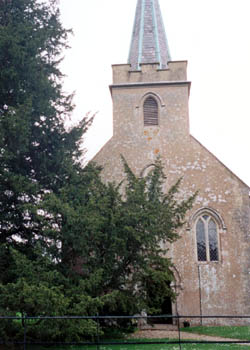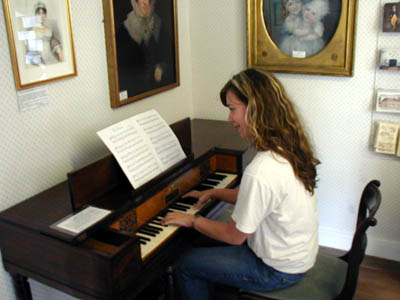
No one interested in Jane Austen should miss the villages of Chawton and Steventon when they visit England. As those who have read a biography of Austen will know, these are the two villages in which she resided for the majority of her life. In fact all of Austen's juvenilia and novels were written in these two villages.
Both villages are worth visiting, but may require some planning to reach as they are off the beaten path. However, the countryside is beautiful, so even if you have to walk a mile to Steventon, it shouldn't be too unpleasant, as long as the weather holds. The muddy cart lanes of Austen's day have been replaced by rather narrow but passable paved roads, that should prove more navigable.
Austen was born in Steventon and lived there until her parents moved to Bath when she was 25. The influence of her country upbringing is obvious in her works. Steventon was a small village and her father was a pre-eminent figure in the day-to-day life as the rector at St. Nicholas, the parish church, and of neighboring Deane. Rev. Austen served as the representative of the Knights, his cousins, who had inherited the estate of Steventon. The village remains isolated as it was in Austen's day when it was a mile in either direction to the nearest road. The small circle of acquaintances, ties to agriculture, and rural setting that made up Austen's childhood, reoccur in most of her novels. The Rectory in which the Austens resided no longer exists, as it was torn down by her brother when he took over his father's living. But St. Nicholas Church still stands as it has for nearly 800 years. The interior of the church has changed greatly, but efforts have been made recently to preserve and restore some elements that they believe to have existed in Austen's day. (The current Rector, the Rev. Michael Kenning, is a devoted Jane Austen fan. He graciously spoke to our group about the Austen family's connection to St. Nicholas as well as mentioning his gratitude to the Jane Austen Society of North America for its financial support in restoring the Church's bells.)

The yew tree which stands to the left of the entrance is the only element of the church which definitely existed during Austen's years in Steventon. In fact it has stood on that spot since William the Conqueror invaded Britain. The graves of some Austen relatives can be found in the rear of the church about a hundred yards behind the yew tree. It is well worth a visiting, even though the rectory, its famous strawberry beds, and extensive gardens no longer exist.

Chawton is sure to please. The house in which Austen, her sister, Cassandra, and their mother lived after Rev. George Austen's death has been restored and is now preserved as a museum. Visitors should aim for the spring or early summer months when the "whole of the shrubbery border will soon be very gay with pinks and sweet williams, in addition to the columbines already in bloom" as Jane mentions to Cassandra in a letter to her in 1811.

Most of the house's furnishings are authentic. Austen's writing desk, upon which she wrote her last three novels, is on display. Visitors can see the famous creaking door, which Austen refused to fix so that she could hide her writing before a visitor entered. On the walls hang examples of the sisters' sewing and writing. Many letters and pictures are also on display. One room has even been turned into an exhibit on the clothing of the era, including not only dresses but naval uniforms similar to what Austen's two brothers might have worn. A fortepiano similar to the one Austen rented while in Steventon stands in the sitting room, and if you are lucky and a talented player, you might get the opportunity to play it, as Jessica Baskin in our group did.

There are several other things to see in Chawton. Among them are the graves of Cassandra and Mrs. Austen which lay behind the parish church approximately half a mile from Chawton Cottage. Immediately up the hill from the church is Chawton House, Edward's residence in Chawton village in which Jane's brother Frank lived for a time. In 2002, the house was being refurbished and converted into The Centre for the Study of Early English Women's Writing, 1600-1830. This Centre should be open in 2003 and will be another interesting stop for Austen scholars. Visitors should also stop into Cassandra's Cup for high tea. The village is quieter than it was in Austen's day, when the Winchester road and frequent stagecoaches ran right outside the house's parlor. A stroll down the street in this peaceful village makes it easy to understand why Austen flourished here. In seven years, Austen managed to revise her first three novels begun in Steventon and to write three completely new ones as well as some fragments, in addition to publishing four of her novels during those years. (The other two were published posthumously.) Austen's residency at Chawton was fruitful and all too brief, but it is a treasure for Austen fans.
Text by Aimee Hall. Photos by Ellen Brown and Rick Spies.
Formatting, design, and layout by Kelly Giles.
[Home] [Bath] [Lyme Regis] [Winchester] [Jane's Homes] [The Vyne] [London] [Bibliography] [Reports]